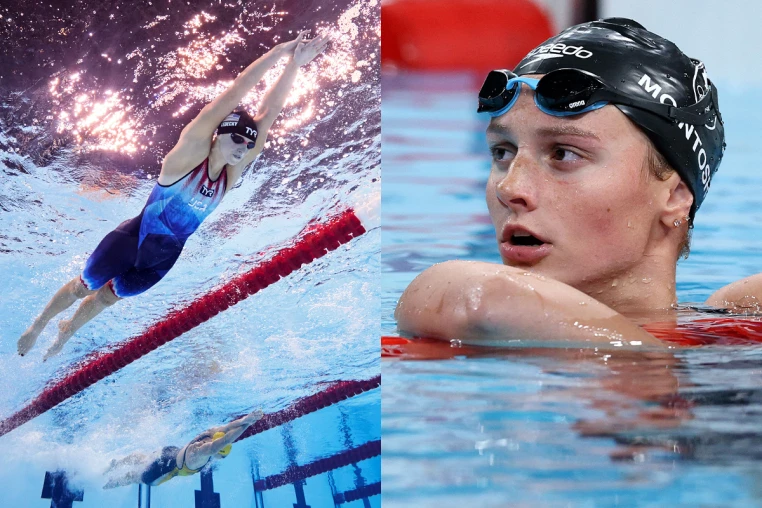
Most people have long visualized sweat as tiny droplets forming and dripping off our skin — a simple and straightforward process. However, recent scientific insights challenge this traditional perspective by revealing a much more complex and fascinating story behind how sweat actually develops. The perception of sweat as isolated droplets is only the tip of the iceberg; the reality involves a dynamic, continuous, and nuanced process that intricately links our biology, physiology, and environmental interactions.
The Common Misconception: Discrete Sweat Droplets
For generations, the imagery surrounding sweating has revolved around discrete, visible droplets that emerge on the skin’s surface. This notion is reinforced by visual cues like beads of sweat on the forehead or the trickle down arms during hot days or intense activity. While these droplets are quite observable, they are merely a superficial layer of a more complex phenomenon rooted deep within our skin’s biology.
This classic view simplifies a process that is actually a continuous, layered event occurring at the microscopic and molecular levels. As a result, understanding sweat requires us to look beyond these visible droplets and explore the underlying mechanisms that generate and regulate sweat formation.
The Scientific Breakthrough: How Sweat Really Forms
Moving Beyond Discrete Droplets: The Colorful World of Sweat Formation
According to recent research published by Science News, the process of sweat formation is far more intricate, dynamic, and layered than previously appreciated. Researchers have uncovered that sweat glands operate through a continuous secretion process, rather than producing isolated droplets that simply appear and fall away.
This revelation shifts the focus from visual cue-based understanding to a molecular and cellular level consciousness of **how sweat is generated, transported, and released**. The formation of sweat involves a sophisticated orchestration of biological signals, fluid dynamics, and cellular interactions that maintain homeostasis, regulate body temperature, and respond to environmental cues.
Mechanisms of Sweat Production: The Role of Sweat Glands
Structure and Function of Sweat Glands
Sweat glands are specialized structures embedded deep within the skin, primarily classified into two types: eccrine and apocrine glands. For the purpose of thermoregulation and threat response, **eccrine glands** are the most relevant, as they are distributed across most of the body surface and are directly responsible for producing the watery sweat we associate with cooling.
Each eccrine gland operates as a mini factory comprising secretory coils and ductal passages. When the body temperature rises, signals from the nervous system trigger these glands to produce sweat, which then travels through a complex conduit system toward the skin surface.
The Continuous Nature of Sweat Secretion
Rather than producing distinct droplets on command, sweat glands release a **steady, continuous flow** of fluid. This secretion is composed primarily of water, salts, and small organic molecules, all of which are carefully regulated at a cellular level. As the sweat travels through ducts, it may appear as beads or droplets, but this is often a matter of **micro-environmental factors**, like surface tension and humidity, causing the fluid to coalesce into visible forms.
This understanding underscores that sweat is not an **all-or-nothing** event but a **dynamic, ongoing process** capable of adjusting its rate and composition in real-time based on the body’s needs and external conditions.
Physiological Factors Influencing Sweat Formation
Hydration and Electrolyte Regulation
Fluid and electrolyte balance plays a crucial role in sweat production. Our bodies regulate the amount of water and salts secreted by glands to optimize cooling while conserving essential nutrients. When dehydrated or electrolyte-impaired, the glands modulate secretion accordingly, affecting not just the volume of sweat but also its properties.
Neural and Hormonal Controls
The sympathetic nervous system predominantly governs sweat secretion, with nerve signals triggering the release of sweat through neurotransmitter pathways. Additionally, hormones like adrenaline can amplify or suppress sweat production depending on stress, excitement, or physical activity. This **neuro-hormonal regulatory network** ensures that sweat formation remains responsive and adaptable.
The Microenvironment: Why Sweat Looks Like Discrete Droplets
Surface Tension and Environmental Conditions
While sweat is produced continuously, it often appears as separate droplets or beads on the skin due to surface tension. Humidity, skin temperature, and the presence of oils or other substances on the skin surface influence whether sweat forms a thin film or collects into droplets.
High humidity, for example, impedes evaporation, causing sweat to accumulate and appear as droplets, whereas dry conditions promote rapid evaporation leaving less visible residue. The process is thus highly context-dependent and fluctuates dynamically during physical activity or thermal stress.
The Implications of This New Understanding
Rethinking Clothing and Sports Science
Knowing that sweat forms as a continuous process rather than isolated droplets can **reshape approaches** to athletic gear and clothing designed for thermal regulation. Fabrics that facilitate moisture wicking and evaporation can be optimized to better match the real dynamics of sweat secretion.
Advances in Medical and Hydration Strategies
Medical practitioners and hydration experts can leverage this understanding to develop more nuanced approaches for managing dehydration, electrolyte replenishment, and skin health. Recognizing the ongoing nature of sweat production enables better hydration protocols and skin care regimens tailored to individual physiological responses.
The Broader Perspective: Biological and Evolutionary Insights
The complex process of sweat formation underscores the remarkable adaptability of humans. Our ability to regulate body temperature efficiently across diverse environments is rooted in these microscopic yet vital mechanisms. Evolutionarily, the development of continuous sweat secretion and intricate control systems has been crucial in enabling humans to survive and thrive in a multitude of climates.
Conclusion: Moving Forward in Sweat Science
In summary, sweat is far more than isolated droplets—a continuous, dynamic, and highly regulated biological process. Recognizing the true nature of sweat formation enhances our appreciation of human physiology and opens pathways for innovations in health, sports, and everyday comfort. As science unravels further complexities, our understanding of this vital bodily function will continue to evolve, leading to better management, performance, and health outcomes.
For more updated news please keep visiting Prime News World.







